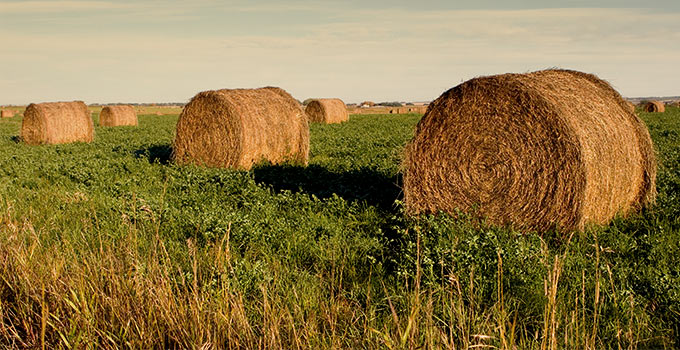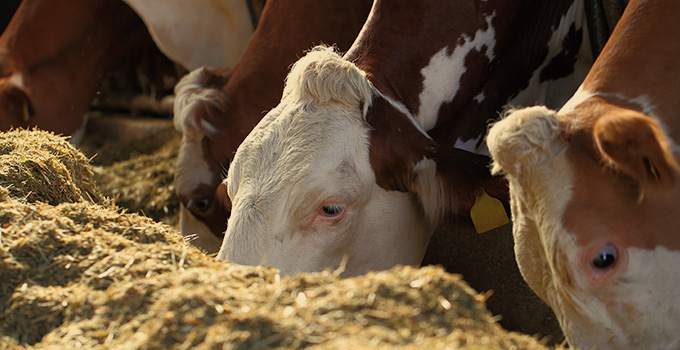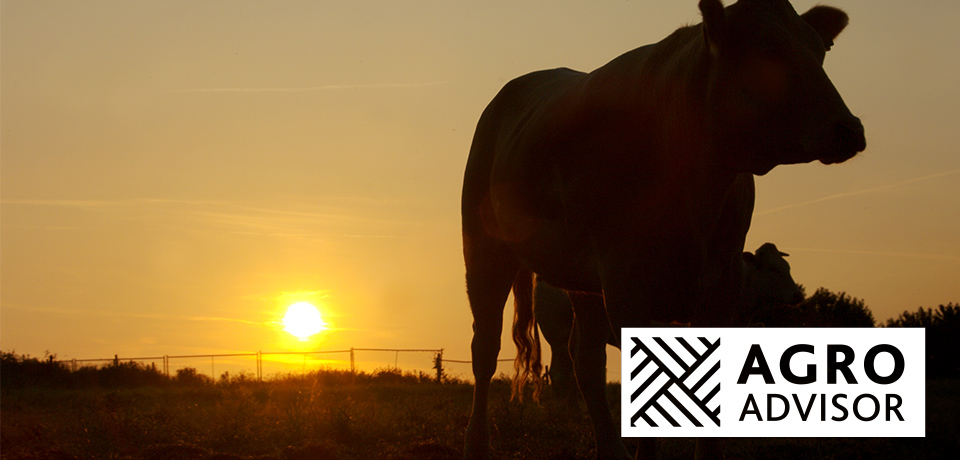Efficient livestock production is all about balance.
Productive herds demand a nutrient-rich diet that meets their energy needs. At the same time, you want to avoid costly overfeeding and get the most mileage possible from your highest quality forages.
Thankfully, you don’t have to guess. Forage tests provide useful information that can keep your nutrition plan from teetering in the wrong direction.
“We do a lot of forage testing here, but there is room to grow,” said Erin Steen, a Nutrition and Production Consultant with Co-op, who takes forage samples for producers and helps them interpret the results and build balanced rations.
“A basic test is approximately $35. It’s minimal in the grand scheme of what they are doing and it can save them a huge amount.”

When a Nutrition and Production Consultant visits your farm, he or she will use a probe to take multiple cores from round bales, which will help to get a representative sample to submit for testing.
What you’ll learn
A forage test will provide you with detailed insights into the feed on your farm, whether it’s hay, green feed or silage.
Results are shown in “as fed” and “dry matter.” The former represents the feed as it’s presented to the animal — moisture and all — while the latter indicates the values with the moisture content removed, which is important for comparing one forage to another. Since water dilutes nutrients, as-fed values are always lower than dry matter values.
While final analysis contains many measurements, a few stand above the rest, said Steen.
“We are able to help them match that forage test with the animals’ nutrient requirements,” said Steen.
“Everyone’s scenario is a little bit different, but it can help them know what they need to supplement. Sometimes they may find out that they have a really good forage — higher quality than expected — and they can save by not supplementing extra protein.”
|
Crude protein (CP) |
Relative feed value (RFV) |
|
Acid detergent fibre (ADF) |
Total digestible nutrients (TDN) |
|
Neutral detergent fibre |
Minerals |

Silage can also be tested. Samples can either be taken at the time of chopping or from the face of the pit. In both cases, samples should be kept frozen so that their moisture content doesn’t change.
Every year is different
Steen encourages producers to sample and test forages every season.
Even if a particular field or forage variety has always performed well, a lot can change from one season to the next. Time of harvest, environmental factors and storage conditions can all influence the nutrient profile of the forage.
“Values can change,” said Steen. “Sometimes producers think it looks good visually, but visually you can’t see what the protein level is or what the energy level is.”
Quality control
If mould is visible in your forages — or if you have other concerns about its quality — you may benefit from a second test that will look for mycotoxins, ergot or nitrates.
“Last year, we ran into a lot of feeds with mycotoxins and we really saw some benefits from forage testing,” said Steen, who works with producers in the Saskatoon region.
“We tested a lot of feed and some producers were able to feed it, because the mycotoxins were relatively low. Others definitely had to manage it.”
Across Western Canada, Co-op employs a team of feed experts who assist producers with their feeding programs. To discuss forage testing and ration balancing with a Nutrition and Product Consultant, contact your local Co-op Agro Centre or Co-op Feed Plant.

